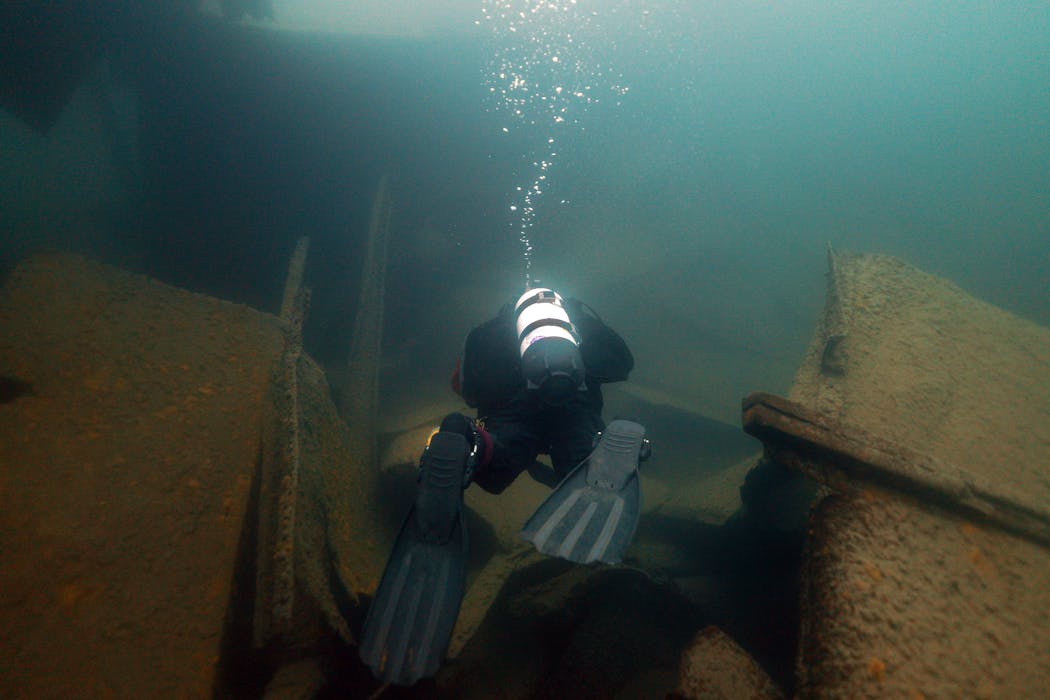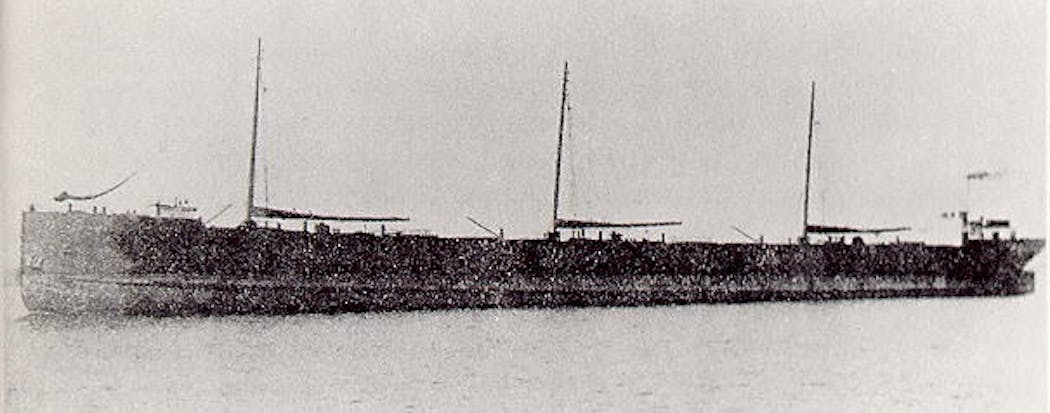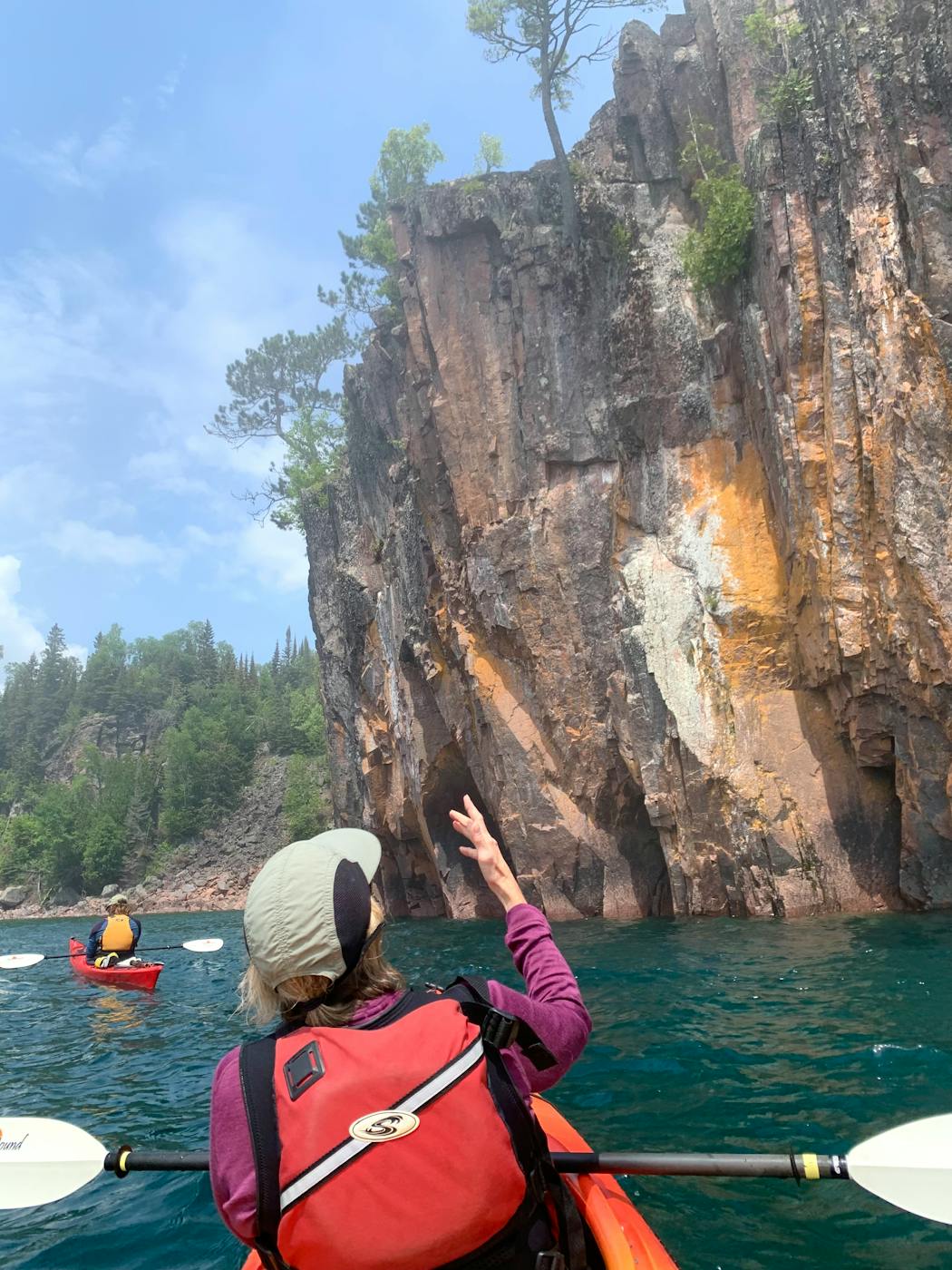Our kayaks sliced through the thick fog that blanketed Lake Superior, erasing any view of Split Rock Lighthouse towering on the cliffside ahead.
We paddled past one of Minnesota's most recognizable landmarks to discover a different historic site, largely hidden from visitors' view.
As sunshine cut through the fog, giving way to blue skies, we peered through the clear waters at the steel remains of the Madeira — a 1905 shipwreck that helped spur the construction of the iconic lighthouse.
"Basically, it's our origin story," says Hayes Scriven, the site manager of the lighthouse. "It represents the reason Split Rock is here."
After decades of exploring Split Rock State Park — the most visited state park in 2022 and one of the most photographed sites in Minnesota — paddling the lake revealed a new perspective and brought us as close to a sunken ship as we'll likely get without diving.
One of the first things Scriven did when he started the lighthouse keeper role in 2019 was kayak to the Madeira, gliding across the blue-green waters over the bow of the ship below.
"It's really awe-inspiring," he says. "It makes you really respect the power of the lake."
On Nov. 28, 1905, the schooner-barge was being towed by a steamer, the William Edenborn, when a fierce storm hit. According to the Minnesota Historical Society, the Edenborn cut the Madeira's towline, fearing the safety of its own crew. The Madeira collided with Gold Rock Point, north of where the lighthouse sits now.
"[Without a motor] it was doomed to go down," Scriven says.
The storm, with gales as high as 60 miles per hour, was one of the worst in the lake's history, killing more than 30 crew members and damaging or wrecking about 30 vessels, including the Edenborn, which ran aground.
Two days after the storm, the Minneapolis Tribune reported on the missing Madeira, fearing that all 10 crew members aboard had been lost.
But that didn't happen, thanks to Fred Benson, a Scandinavian crewman. According to the Historical Society, Benson scaled Gold Point's jagged cliff carrying a coil of rope. He secured it, attached a stone and threw it down to rescue eight crew members amid the violent waves. One died trying to jump to safety.
For 40 hours, the nine survivors, including a 70-year-old captain, huddled in the woods until a tugboat rescued them two days later, according to newspaper reports of their harrowing escape.
The Madeira crew's heroism stands out in an otherwise tragic story of a storm that killed so many men, and the shipwreck is credited with pushing the federal government to build the lighthouse in 1910.
The Edenborn was salvaged but the Madeira debris spans 22 acres. In 1972, a salvage firm discarded some remnants in the state park's bay. One of the wheels, anchor and some other artifacts are on display at the Historical Society's museum.
By 1992, the shipwreck was added to the National Register of Historic Places.
About 100 scuba divers visit the Madeira site each year, but for us, paddling with a guided tour provided easier access and an expert to help safely navigate the temperamental lake.
"Most people are pretty amazed," says Jake Boyce, co-owner of Day Tripper, which has led tours of Split Rock for nine years. "The perspective you get from the water is so different than what you get up by the lighthouse or on land."
Superior's frigid waters and lack of salt help preserve shipwrecks, and the rocky bottom makes them more visible than stirred-up sand, he says. On a clear day, the sunken barge — located in depths of water that span 15 to more than 100 feet — is visible from the seat of a kayak, if you know where to look.
"People will be paddling by ... and they have no idea," Boyce says. "I've pointed that out, 'Hey you guys know you're paddling over a shipwreck right now?' "
The Duluth company offers several North Shore tours from May to September, depending on the weather. Split Rock is the most popular. A shipwreck sighting isn't guaranteed; wind and waves force some tours to turn around.
It may look tame from the shoreline, but rocking in a kayak on the big water quickly shows just how strong the great lake can be — with the Madeira one of the many somber reminders of its treacherous conditions.
"Most people still think of Lake Superior as a lake, not as a body of water that can sink a 400-foot ship ... rip it apart and shred it into tiny pieces," Boyce says. "Lake Superior is in charge. It is still a dangerous body of water."
Once dominant at CBS News before a bitter departure, Dan Rather makes his first return in 18 years
Pope visits Venice to speak to the artists and inmates behind the Biennale's must-see prison show
Nicole Kidman, who 'makes movies better,' gets AFI Life Achievement Award





